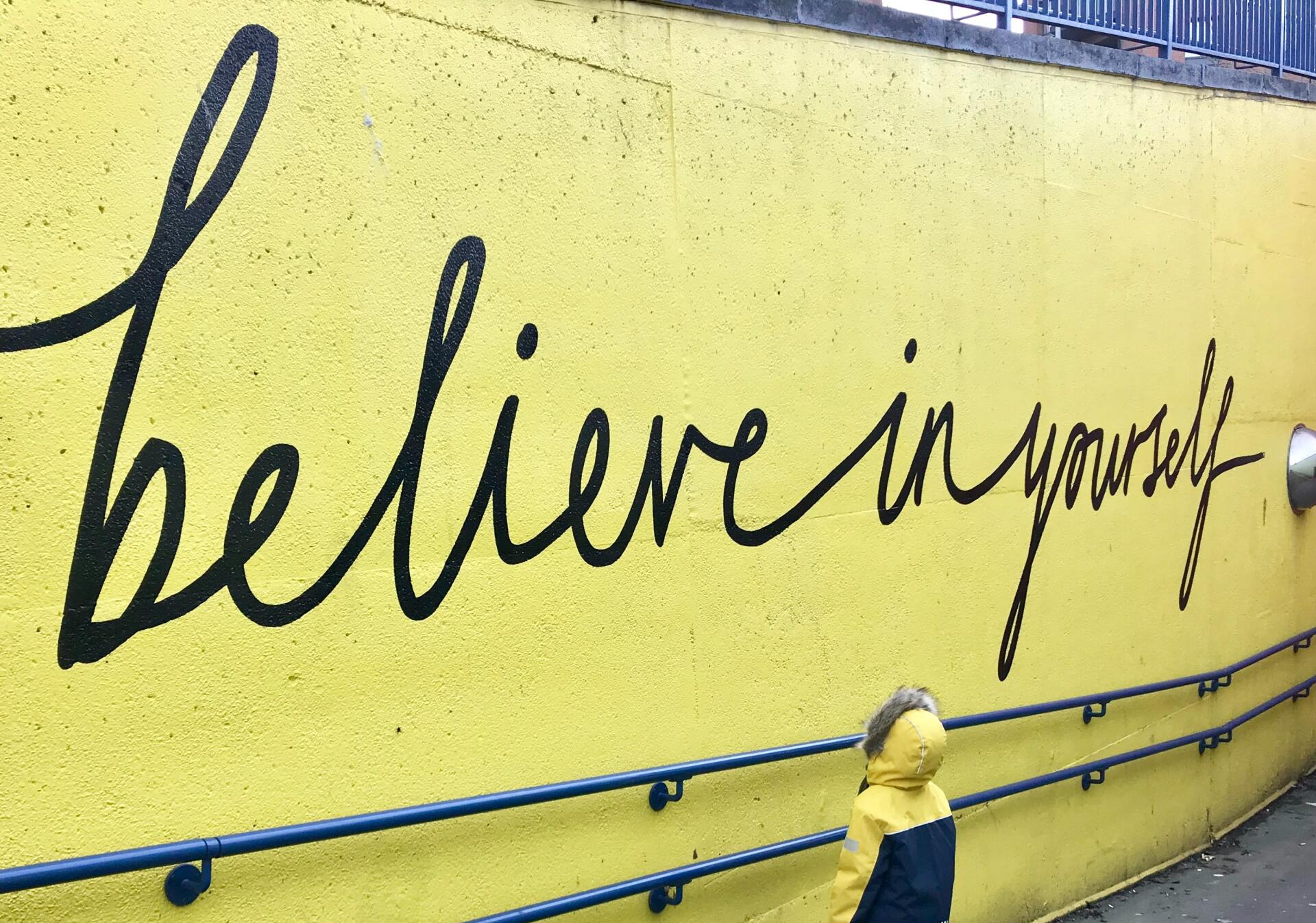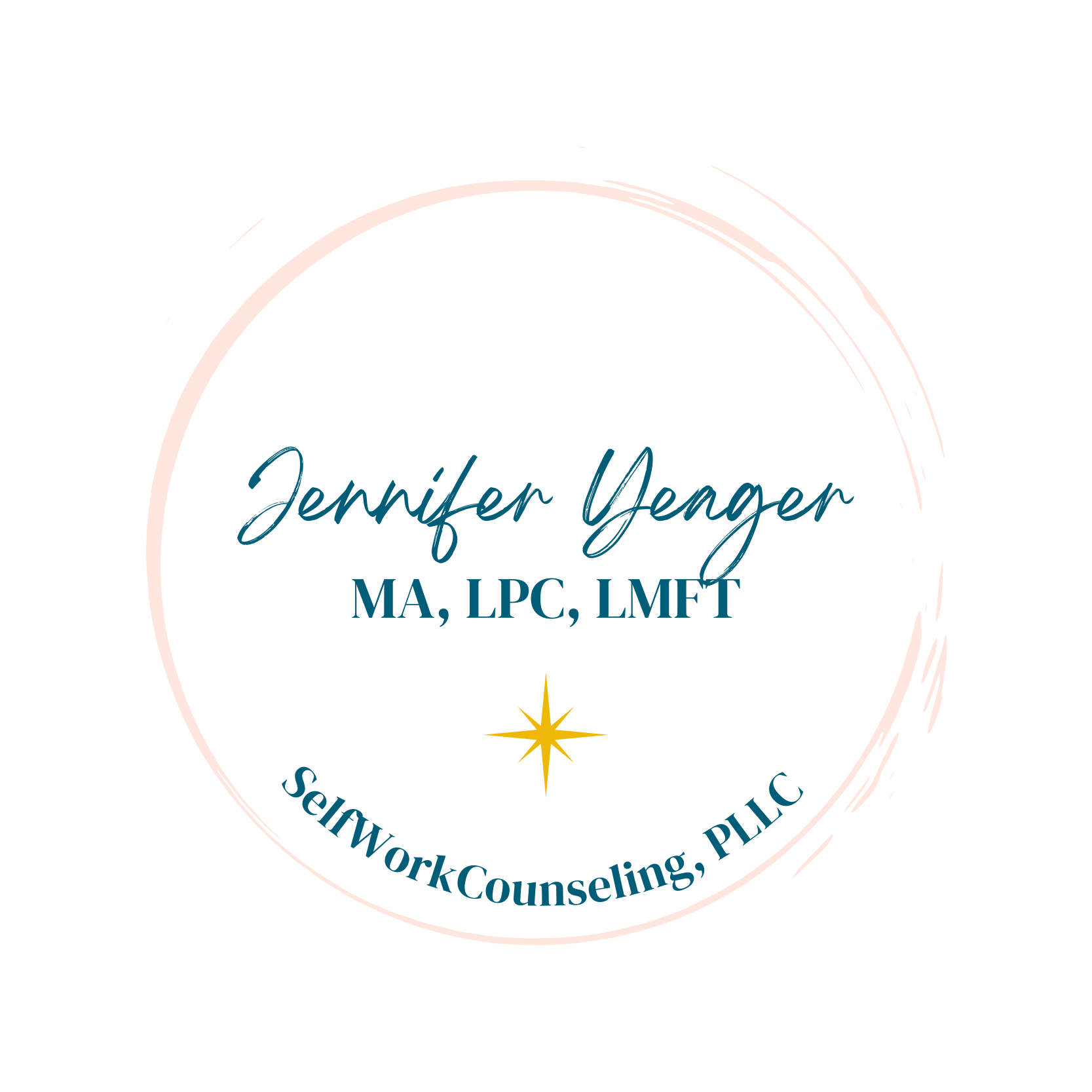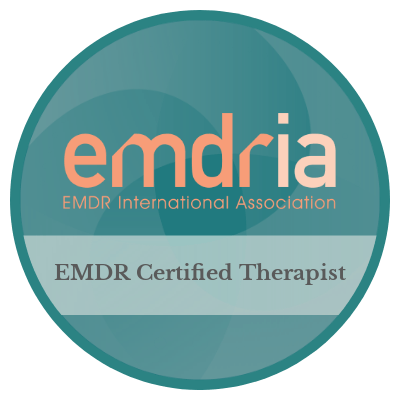Blog

With Fall comes the gentle reminder that in order to make room for the new, we must let go of what no longer serves us. Just as the trees release their leaves, we too are invited to release. While letting go may feel uncomfortable—sometimes even scary—the falling leaves remind us that in every ending, space is created for a new beginning. Autumn whispers to us: you don’t have to hold on so tightly. Nature shows us that letting go is not about loss, but about creating space for renewal, growth, and possibility. What Might You Let Go Of? Letting go can take many forms. It might be: Old resentments that weigh on your heart. Material items that clutter your space and energy. Behaviors or patterns that no longer align with who you are becoming. Unhealthy beliefs that keep you from stepping into your full self. You don’t have to release it all at once. Simply softening to the idea of letting go can be the first gentle step. Create a Soft Space for Yourself As you lean into this season of release, remember that gentleness is key. You might: Wrap yourself in a cozy blanket. Sip a warm cup of tea. Sit quietly with your fur-baby. These simple acts of self-soothing create a safe space for you to explore what’s ready to be released. Journal Prompts for Reflection Take some time with your journal and explore: What am I holding onto that feels heavy or draining? What beliefs, habits, or patterns no longer support my growth? If I were to let go of one thing today, how might it create space for something new? What does the image of a tree releasing its leaves teach me about my own process of release? How can I support myself with compassion as I practice letting go? Closing Reflection Letting go is not about rushing or forcing. It’s about softening. When the time feels right, allow yourself to release—just as a tree effortlessly lets go of its leaves. In that surrender, you create space for renewal, healing, and the blossoming of something new. This Fall, may you find the courage to release and the gentleness to nurture yourself in the process.

Like many of you, I’ve found myself thinking about the families who sent their children off to summer camp—full of love, care, and hope—only to be met with the unimaginable. As a mom, this one hits especially close. I can vividly remember the swirl of emotions that come with sending my child off to camp. The careful packing. The little pep talks about trying new things. The hugs goodbye. The silent prayers whispered as you drive away: Please let this be a week of laughter, of friendship, of fun and growth. We trust others to care for our children. We hold space for both their independence and our fears. We look forward to the stories shared on the ride home and maybe a bag full of dirty laundry and happy memories. Nothing can prepare you for the phone call or news alert that shatters all of that in an instant. I cannot comprehend the horror of receiving that news and not knowing if your child is safe. The powerlessness. The not knowing. The desperate need for information. The agony of waiting, of imagining, of trying to hold on to hope while fearing the worst. To the families who lost their daughters: I am so, so sorry. There are no words that will ever be enough. As a mother, my heart breaks for you. I see you. I’m holding you in my heart. To the campers, counselors, and staff who lived through the flood firsthand—please know that your fear, your grief, your trauma are all real and valid. These experiences don’t just go away. They live in the body, in memory, in the quiet moments when everything catches up to you. You don’t have to carry that alone. To those who were there—who tried to help, who were caught in the chaos, who watched in helplessness and horror—please know: what you went through matters. You may be left with haunting images, recurring sounds, or painful flashbacks. You might find yourself swinging between numbness and overwhelm. All of that is part of the mind and body trying to make sense of something that simply doesn’t make sense. You are not alone. To the first responders—thank you. Truly. You stepped into unimaginable circumstances with bravery and compassion. You carried other people’s fear while managing your own. You brought people home. You hold stories that most of us will never know, and you carry a weight few can understand. Thank you for showing up with such fierce humanity. And to the wider community—those of us watching from afar, feeling helpless or heartbroken or unsure of what to do—please know this: there’s no “right” way to grieve or respond to something like this. Whether you’re feeling numb, angry, terrified, or deeply sad—your feelings are valid. They deserve care, too. As a therapist—and more importantly, as a fellow human and a mom—I want to say this clearly: if you are one of the families impacted, if you’re a parent, a sibling, a grandparent, a friend—my heart is with you. Nothing anyone says can undo what happened. But I want you to feel seen in your grief, your rage, your confusion, and your deep, deep sorrow. Trauma doesn’t disappear just because the headlines fade. Tragedy leaves a mark. And healing doesn’t happen in isolation—it happens in connection, in community, and over time. So please: take gentle care of yourself and the people around you. Reach out if you need support. Let yourself cry. Let yourself rest. Hug your people. Be a little softer with strangers. If you’re someone holding space for others—keep showing up, even when the world gets quiet again. In moments like this, we are reminded of the fragility of life—and also of the strength we carry together. May we hold each other close. May we extend grace freely. And may we make room for every feeling that comes with heartbreak. My heart is with every person affected by this tragedy. With care, Jennifer

Infidelity is one of the most deeply painful experiences that can happen in a marriage. Whether it’s a physical affair, an emotional connection outside the relationship, or even digital betrayal, the discovery often sends shockwaves through every part of a couple’s life. If you're reading this, there's a good chance you're trying to make sense of something that has turned your world upside down. You may be feeling broken, disoriented, or unsure if your relationship—or your heart—can ever recover. You're not alone. And while there’s no one-size-fits-all roadmap, healing is possible. The Earthquake of Betrayal When infidelity enters a marriage, it's rarely just about the behavior—it’s about what it represents. For the betrayed partner, it often feels like the foundation of safety, loyalty, and shared reality has been pulled away. What was once assumed—“I can count on you,” “We’re on the same team”—is suddenly up for question. Many describe it as a kind of relational trauma. That’s because betrayal doesn’t just hurt—it can dysregulate your nervous system. You may feel on high alert, unable to sleep, obsessing over details, or even questioning your own memory and worth. The emotional pain can feel physical. The anxiety and panic may come in waves. This is not weakness. This is your body trying to make sense of a deep rupture in trust. For the Partner Who Had the Affair If you’re the one who was unfaithful, you might be carrying your own form of pain—shame, guilt, regret, confusion. You may be facing the reality of how your actions have impacted someone you care about, and you might also be reckoning with your own unmet needs, patterns, or blind spots. It’s possible to hold both accountability and compassion—for yourself and for your partner. But it starts with honesty: not just about what happened, but about what it meant. Infidelity often points to disconnection, avoidance, or unresolved pain that wasn’t being named or tended to in the relationship—or within the self. What Infidelity Can Reveal About a Relationship Contrary to popular belief, affairs don’t always happen in “bad” marriages. Sometimes the relationship looks functional on the surface. But underneath, there may be emotional distance, avoidance of conflict, resentment, loneliness, or a loss of intimacy. Infidelity can expose these buried dynamics. While that doesn’t justify betrayal, it helps us understand it. And when both partners are willing to look beneath the surface, there’s potential for real growth. That said, the betrayal must be addressed first—before the relationship can be rebuilt. The betrayed partner must feel emotionally safe enough to share their pain without being minimized, blamed, or rushed to forgive. Rebuilding After Infidelity: What Does Healing Actually Look Like? Healing after infidelity isn’t about “getting over it.” It’s about moving through it with intention, truth, and care. Here’s what that often involves: 1. Emotional Safety and Stabilization Before repair is possible, the betrayed partner must feel emotionally safe. This means the affair is over, communication is honest, and emotional reactions—however intense—are met with empathy, not defensiveness. 2. Truth-Telling and Transparency The truth is painful, but secrets and lies prolong the suffering. Couples often need a structured space (like therapy) to talk about what happened, why it happened, and what it means moving forward. 3. Grieving the Loss Even if the couple stays together, something has been lost—the “us” that once was. Both partners may need to grieve not just the affair, but what the relationship used to represent. 4. Exploring the Deeper Roots Why did this happen? What was going on internally, relationally, or historically that made space for betrayal? This isn’t about blame—it’s about insight, pattern awareness, and growth. 5. Rebuilding Trust (Slowly) Trust doesn’t come back all at once. It’s rebuilt in hundreds of small moments: showing up consistently, being emotionally present, telling the truth, and staying steady when emotions are high. 6. Reconnecting with Intimacy True intimacy—emotional, physical, spiritual—can be rebuilt over time. But it must be mutual, chosen, and safe. Some couples discover deeper layers of connection than they ever knew possible. Should We Stay Together? Not every couple chooses to stay together after an affair. Some relationships end, and that can be a path to healing too. What matters most is making that decision with clarity—not from a place of fear, reactivity, or unresolved trauma. Therapy can help couples slow down, explore all sides of the situation, and make decisions with dignity and self-awareness. A Gentle Invitation If you’re hurting right now—if you feel lost, angry, numb, or unsure of what to do next—I want you to know this: Your pain is real. Your story matters. You deserve support that honors the complexity of what you're going through. Whether you want to repair your marriage, understand what happened, or simply find your footing again, you don't have to walk this path alone. Therapy offers a place to be heard without judgment—and to discover what healing can look like for you.

Conflict in marriage is inevitable—but it doesn’t have to be destructive. In fact, healthy conflict can be one of the most powerful tools for growth and intimacy in a relationship. The key lies in how you fight, not whether you fight. Establishing rules for fair fighting helps couples stay connected even in moments of disagreement, transforming tension into an opportunity for deeper understanding. Here’s how to develop your own set of fair fighting rules for a healthier marriage: 1. Start with a Shared Commitment Before diving into specific rules, both partners need to agree on the why. The goal of fair fighting isn’t to “win” but to understand each other and solve problems together. When you both commit to protecting the relationship—not just your individual positions—you set the stage for productive conflict. 2. Agree on a Time-Out Signal Sometimes emotions run high and logic runs out. Establishing a mutually agreed-upon time-out signal gives either partner the right to pause the conversation without judgment. The key is to also agree on when you’ll come back to it—ideally within 24 hours. Avoidance isn’t resolution. 3. Use “I” Statements Blaming language (“You always...” or “You never...”) escalates tension. Instead, use “I” statements that focus on your own experience: “I felt dismissed when my opinion was cut off in the conversation.” This keeps the focus on emotions and needs, rather than accusations. 4. Stay on One Topic Fights can spiral quickly when couples bring up past arguments or unrelated grievances. Practice staying focused on the issue at hand. If something else needs to be discussed, jot it down for later—don’t pile it on in the heat of the moment. 5. Ban the “Four Horsemen” Relationship researcher Dr. John Gottman identified four toxic behaviors that predict divorce: Criticism Contempt Defensiveness Stonewalling Make a joint promise to catch and replace these with healthier alternatives like curiosity, empathy, and calm self-expression. 6. No Name-Calling or Character Attacks It sounds obvious, but in moments of anger, it’s easy to slip into insults or personal attacks. Set a clear boundary that name-calling, yelling, or demeaning language is off-limits. Disrespect undermines safety, and safety is non-negotiable in healthy conflict. 7. Take Responsibility It’s hard, but owning your part in a conflict builds trust. Even if you feel 90% right, look for the 10% you can own. This shifts the energy from blame to collaboration and often invites your partner to do the same. 8. Focus on Resolution, Not Retaliation Ask yourself: What do I want to be different after this conversation? Aim for solutions, not point-scoring. When both partners look for compromise or clarity, conflict becomes a path toward connection—not a battleground. 9. End with Reconnection After resolving a disagreement (or even agreeing to disagree), close the loop with something reconnecting: a hug, a check-in, or simple words like, “I’m glad we could talk that through.” This reinforces safety and helps prevent lingering resentment. 10. Revisit Your Rules Periodically Just like marriage, your conflict habits evolve. Check in every few months: Are our rules still working? Do we need to tweak anything? Stay flexible and intentional. Final Thoughts: Fighting fair doesn’t mean avoiding conflict. It means showing up with care, respect, and humility—especially when it’s hard. With the right ground rules, conflict can be a bridge to a stronger, more connected marriage.

When trauma shows up in a relationship, it can feel like you and your partner are fighting battles you don’t even understand. Suddenly, small moments—like a certain look, a missed text, or a sharp tone—become big triggers. You might wonder, “Why is this happening? Why can’t we get past this?” The answer often lies in the impact of trauma on our nervous systems and attachment patterns. What is PACT Therapy? PACT stands for Psychobiological Approach to Couple Therapy, developed by Dr. Stan Tatkin. It’s a cutting-edge model that blends: Attachment theory (how we bond with others), Developmental neuroscience (how our brain and nervous system affect relationships), Arousal regulation (how we manage stress and emotional intensity). PACT focuses on creating a secure-functioning relationship, where both partners operate as a team, prioritizing safety, fairness, and mutual care. Trauma & The Relationship System Trauma doesn’t just live in the past. It gets stored in our bodies and nervous systems, often outside of conscious awareness. Through implicit memory, past hurts can get triggered by present-day interactions, even if they don’t logically make sense. For example: A tone of voice might stir up an old memory of being criticized. A moment of emotional distance might echo feelings of abandonment from childhood. These reactions happen in the body before the mind can “think it through.” In relationships, this can lead to automatic responses like shutting down, lashing out, or withdrawing—not because you don’t love your partner, but because your nervous system is trying to protect you. What Does “Secure-Functioning” Mean? In a secure-functioning relationship: Both partners are committed to being each other's safe person. The relationship becomes a secure base, where vulnerability is met with care. Partners prioritize mutual regulation—helping each other calm down and stay connected. Secure-functioning isn’t about never having conflict. It’s about how quickly and effectively you repair, reconnect, and reassure each other after conflict. How PACT Helps Couples Heal from Trauma Here’s how PACT specifically supports couples where trauma is part of the picture: 1. In-the-Moment Awareness PACT therapists pay close attention to subtle cues—facial expressions, posture shifts, vocal tone—that reveal when trauma responses are being triggered. By slowing down and noticing these reactions, couples can begin to respond differently. 2. Co-Regulation Skills Rather than managing distress alone, PACT teaches partners to co-regulate—to soothe each other’s nervous systems. This might look like offering a gentle touch, softening your voice, or validating your partner’s feelings in the moment. 3. Creating New Relational Experiences Each time partners successfully navigate a trigger with care and attunement, the brain starts to rewire. New, positive experiences begin to overwrite the old, painful implicit memories. 4. Building a Relationship that Feels Safe The ultimate goal of PACT is to help couples create a secure-functioning system where both people feel safe, supported, and valued. Over time, this becomes a powerful container for healing trauma. Why It Matters When trauma gets activated, it’s easy to fall into patterns of self-protection that push your partner away. PACT helps couples break these cycles—not by blaming or pathologizing—but by fostering compassionate understanding and teaching partners how to be a safe haven for each other. Healing happens in connection. Final Thought You don’t have to be “perfectly healed” before having a healthy relationship. With PACT, the relationship itself becomes part of the healing journey. A secure-functioning relationship isn’t just possible after trauma—it’s one of the most powerful tools for healing it.

When a marriage is devastated by sex addiction and betrayal trauma, the aftermath often feels like standing in the middle of an earthquake — the ground beneath you is cracked, unsteady, and unfamiliar. The betrayal fundamentally shifts the dynamics of the relationship, and both partners are left wondering if rebuilding is even possible. The truth is, the outcome of the marriage often hinges on one critical factor: the betrayed partner's ability to hold their ground. And yet, holding your ground in the wake of betrayal can feel impossibly hard. It can feel unfamiliar — maybe even wrong — to prioritize your own well-being when so much of your energy has gone toward protecting the relationship. But what if I told you that reclaiming your voice, your boundaries, and your self-respect is the very thing that has the power to shift the trajectory of your healing — and possibly the marriage? What Does It Mean to "Hold Your Ground"? In the context of betrayal trauma, holding your ground means: Maintaining a clear sense of self despite the chaos. Refusing to minimize your pain or the impact of the betrayal. Naming and upholding your needs and boundaries without guilt. Not over-functioning to repair the relationship while your partner remains passive or unaccountable. It does not mean becoming harsh, disconnected, or punitive. Instead, it is about standing firm in your truth, dignity, and self-respect — even when it feels uncomfortable or unfamiliar. Why Is This So Hard After Betrayal? Betrayal trauma has a unique way of disorienting you. The person you once trusted the most has now become the source of profound hurt, and your brain scrambles to make sense of it. This often triggers: Fight, flight, freeze, or fawn responses — causing you to either rage, shut down, or over-function to regain a sense of control. A profound fear of abandonment — making it difficult to assert boundaries for fear of losing the relationship altogether. Self-doubt — wondering if you are overreacting, too needy, or unlovable. This is exactly why holding your ground can feel counterintuitive — but it is also why it is essential. The Impact of Holding Your Ground on the Marriage When you hold your ground, you are sending a clear and powerful message: "I will no longer participate in a relationship that diminishes my dignity or safety." "My healing and well-being are non-negotiable." "You must do your own work to rebuild trust — I cannot do it for you." This shifts the burden of change back onto the betraying partner, where it belongs. Without this shift, the betraying partner may default to minimizing the betrayal, avoiding accountability, or expecting you to simply "move on." But when you hold your ground, you give them an opportunity to either step up and engage in meaningful repair — or reveal their unwillingness to do so. Either way, you gain clarity. And if your partner does lean into true accountability, humility, and repair, it will not be because you begged them to — but because you refused to participate in a dynamic that harmed you. What Holding Your Ground Is Not It’s important to clarify what holding your ground is not: It is not controlling the outcome of the relationship. Holding your ground means being willing to lose the marriage if your partner is unwilling to do the work — but it does not mean forcing or fixing it. It is not punitive. This is not about punishing your partner; it is about protecting your healing, safety, and well-being. It is not a shortcut to reconciliation. Holding your ground does not guarantee that your marriage will survive — but it does guarantee that you will not abandon yourself in the process. The Hardest Part: Facing the Unknown One of the most excruciating parts of holding your ground is confronting the unknown: "Will they rise to the occasion — or will they walk away?" But here’s the truth — if you abandon yourself to keep the marriage, you will ultimately lose both. If you hold your ground, you keep yourself — and that is the only position from which a healthy, repaired marriage can even be possible. This is not easy work. It requires a deep willingness to feel discomfort, grief, and uncertainty. But in return, it offers you the greatest gift: clarity, self-respect, and the potential for true healing — whether in your marriage or within yourself. A Word to Betrayed Partners: You Are Not Alone If you’re reading this and you’re in the thick of betrayal trauma, I want you to know: I see you. I know how heavy this is. I know how tempting it can feel to shrink yourself, soften your needs, or rush the repair — just to avoid losing the relationship. But you deserve so much more than a relationship built on the shaky foundation of unaddressed betrayal. You deserve truth. You deserve repair. You deserve peace. Holding your ground does not make you harsh — it makes you courageous. And if you’ve been wondering if you have permission to prioritize your well-being, let me be clear: You do. You have permission to ask for what you need, to set limits around what you will and will not tolerate, and to let the outcome of the marriage be determined by your partner’s willingness to step into accountability — not by your willingness to over-function to save it. So if you feel yourself wavering, I encourage you to pause, take a deep breath, and ask yourself: "Am I abandoning myself to preserve this relationship — or am I holding my ground and allowing the truth to reveal itself?" That moment of clarity — painful as it may be — is the first step toward reclaiming your voice, your worth, and your future. And whatever happens next, you will not regret choosing yourself.

Trauma bonds are complex emotional attachments formed in abusive or toxic relationships. For many, they are a confusing and painful experience, often leaving individuals wondering, “Why do I feel so attached to someone who hurts me?” Let’s explore the nature of trauma bonds, how they develop, and how to start healing. What Is a Trauma Bond? At its core, a trauma bond is a deep emotional connection that develops between an individual and their abuser. This bond often forms as a result of cycles of abuse and intermittent reinforcement, where periods of intense mistreatment are followed by moments of affection, apology, or calm. These highs and lows create a powerful emotional dependency, making it difficult to leave the relationship. How Trauma Bonds Form Trauma bonds are not a sign of weakness or flaw but a natural psychological response to intense stress and manipulation. Several factors contribute to their formation: 1. Intermittent Reinforcement: Unpredictable cycles of reward and punishment keep you emotionally hooked. You may start to focus on the good moments, hoping they’ll return. 2. Survival Instincts: When faced with trauma, our brains prioritize attachment to those around us, even if they’re the source of harm. It’s a survival mechanism rooted in human evolution. 3. Shame and Guilt: Abusers often manipulate their victims into feeling responsible for the abuse, deepening feelings of unworthiness and fostering dependence. 4. Hope for Change: Many victims hold on to the belief that their abuser can change, which prolongs the attachment. Recognizing a Trauma Bond If you suspect you may be in a trauma bond, here are some signs to look for: - You feel stuck in the relationship, even though you know it’s harmful. - You rationalize or downplay the abuser’s behavior. - You experience an intense longing for the abuser, even after leaving. - You find yourself unable to break free despite support from loved ones. Breaking Free Healing from a trauma bond is a process that requires time, support, and self-compassion. Here are some steps to help you start: 1. Seek Professional Help: Therapists can provide tools to process your emotions and understand the dynamics of abuse. 2. Educate Yourself: Learning about trauma bonds and abuse can help you recognize patterns and validate your experience. 3. Build a Support Network: Surround yourself with people who care about you and can offer encouragement. 4. Practice Self-Compassion: Remind yourself that forming a trauma bond was a survival mechanism. You are not at fault. 5. Set Boundaries: Limiting or cutting off contact with the abuser is often necessary for healing. A Message of Hope Breaking free from a trauma bond is challenging but entirely possible. It starts with recognizing the bond for what it is and seeking the help you need to heal. You deserve relationships rooted in mutual respect, love, and safety. If this resonates with you or someone you know, know that you are not alone. Reach out, seek support, and take one step at a time toward a healthier, freer future.

Starting the New Year: Reflect, Release, Renew As the new year begins, we often focus on resolutions tied to external achievements—losing weight, earning more, or learning new skills. While these goals can be meaningful, the start of a new year is also an invitation to nurture what truly sustains us: our mental health and the quality of our relationships. This year, consider approaching your goals with the theme: Reflect, Release, Renew. Reflect: Learning from the Past Take time to pause and look back on the past year with curiosity and compassion. - What went well?** Celebrate your wins—big and small. - What challenged you?** Acknowledge the difficulties without judgment. - What did you learn?** Reflect on how those experiences have shaped you. Reflection is not about getting stuck in the past but understanding it so you can move forward with greater clarity and intention. Release: Letting Go of What No Longer Serves You The new year is a perfect time to release old habits, thoughts, or relationships that weigh you down. - Release Self-Criticism**: Embrace self-compassion and let go of the pressure to be perfect. - Release Resentments**: Consider forgiveness—not for others, but to free yourself from the burden of anger or hurt. - Release Unrealistic Expectations**: Allow yourself to redefine success in a way that aligns with your values. Letting go creates space for what truly matters. Renew: Embracing Growth and Possibility Renewal is about stepping into the new year with a sense of purpose and hope. - Set Intentions**: Focus on how you want to feel or who you want to become, rather than rigid goals. - Prioritize Connection**: Strengthen your relationships with consistent acts of care and vulnerability. - Invest in Yourself**: Commit to practices that nourish your well-being, whether it’s therapy, mindfulness, or rest. Renewal is not about changing everything overnight but taking small, meaningful steps toward the life you want to create. Looking Forward: This year, embrace the power of reflection, the freedom of release, and the excitement of renewal. By prioritizing your mental health and relationships, you can create a foundation for meaningful and sustainable change. Wishing you a year of growth, love, and fulfillment.

Nelson Mandela once said, “May your choices reflect your hopes, not your fears.” Do your choices reflect your hopes or your fears? Have you allowed discomfort to guide your choices? Discomfort often feels like uncertainty, nervousness, and sometimes fear. Most of us dislike discomfort and actively avoid it. Avoiding discomfort keeps us in our comfort zone. Avoiding discomfort keeps us stuck. While this may feel safe, this is a false sense of safety. When we are too comfortable, we are stagnant, not growing or moving forward. Life often provides us opportunities that call us out of our comfort zone. Each day we are faced with the choice between what is best and what is easiest. Sometimes, the acknowledgement of the difference between the choices we are making and who we truly can be, can bring on feelings of discomfort. It is often easier to continue behaviors and make the same choices instead of facing our fears and embracing discomfort. Change and growth require embracing discomfort. Embracing discomfort is not only hard and scary it requires vulnerability. In the words of Brené Brown, “You can choose courage, or you can choose comfort. You cannot have both.” She describes vulnerability as “uncertainty, risk, emotional exposure”. It is the feelings and sensations we have when we step out of our comfort zone. While we tend to mistake this vulnerability as weakness, this is, truly, the feeling of courage. “Vulnerability is the birthplace of love, belonging, joy, courage, empathy, and creativity” (Brené’ Brown). Many of us spend our lives avoiding vulnerability. Going out of our way to avoid situations that may lead us to experience discomfort. Over time we develop patterns of avoiding discomfort and vulnerability. These patterns may include striving for perfection, numbing out, or “dress rehearsing tragedy” aka going down the rabbit trail of all the ways that things can go wrong. Avoiding vulnerability leads to a false feeling of safety and control. Avoiding vulnerability and discomfort does us much more harm than good. We are wired for belonging and connection. Without vulnerability and discomfort there is no love, no belonging, no connection, no joy. We cannot place walls around us to keep the bad out, yet still let the good in. I challenge you to begin recognizing how you may be avoiding vulnerability. Start to become aware of the moments of discomfort, allow yourself to the opportunity sit with discomfort and learn from it. Begin to identify your patterns of avoiding discomfort. Ask yourself what avoiding discomfort is doing for you. What is it costing you? Is avoiding discomfort worth the it? Embracing discomfort and embracing vulnerability is one of the most courageous things you can do. I hope you give yourself permission to begin understanding your patterns of avoiding discomfort and vulnerability. I hope you begin choosing your hopes over your fears.



